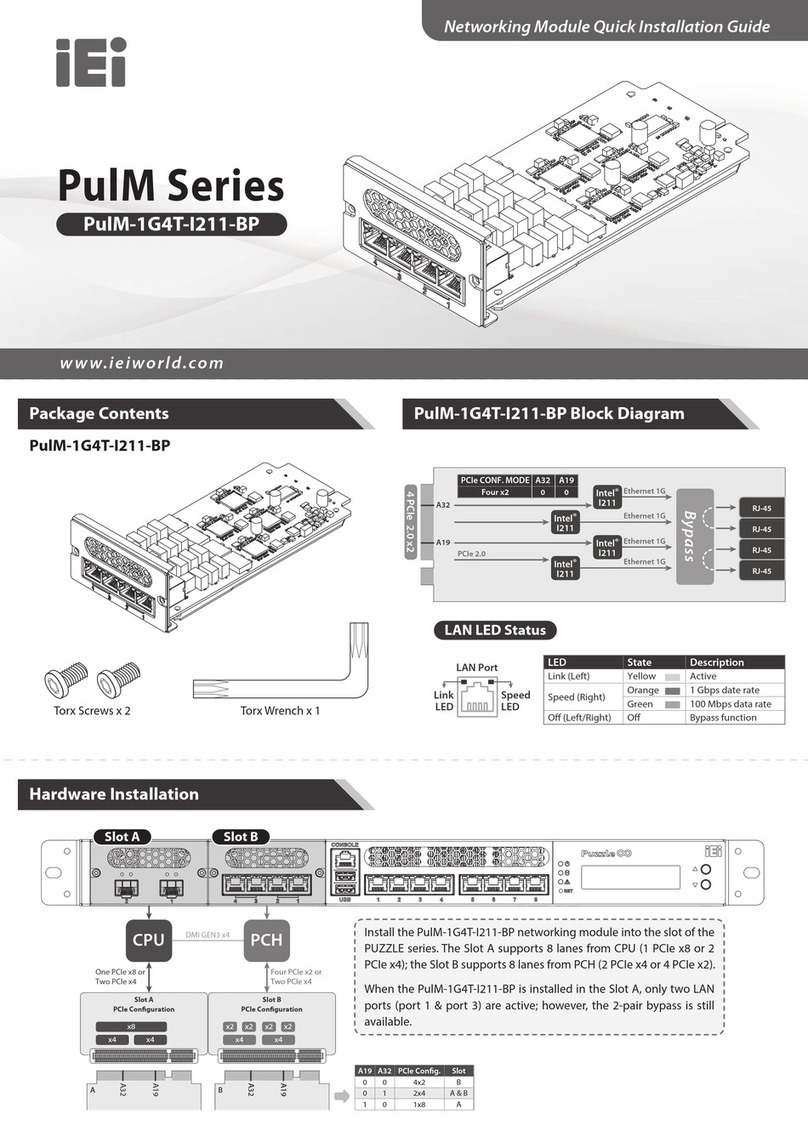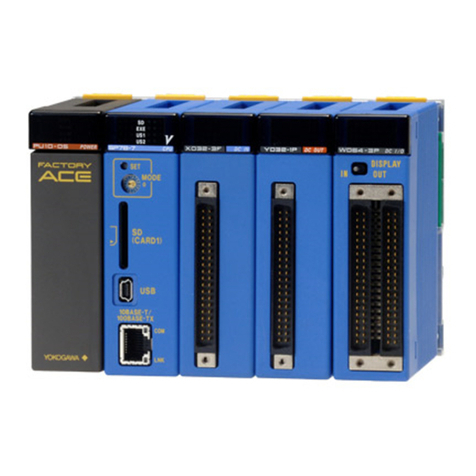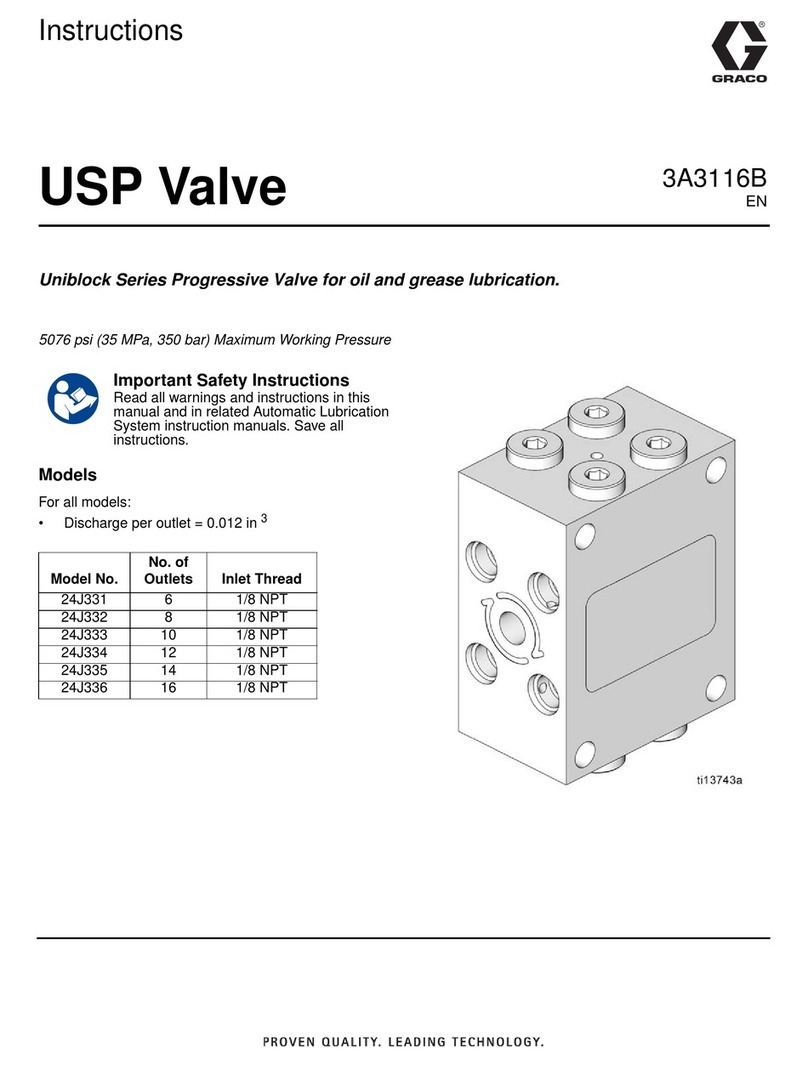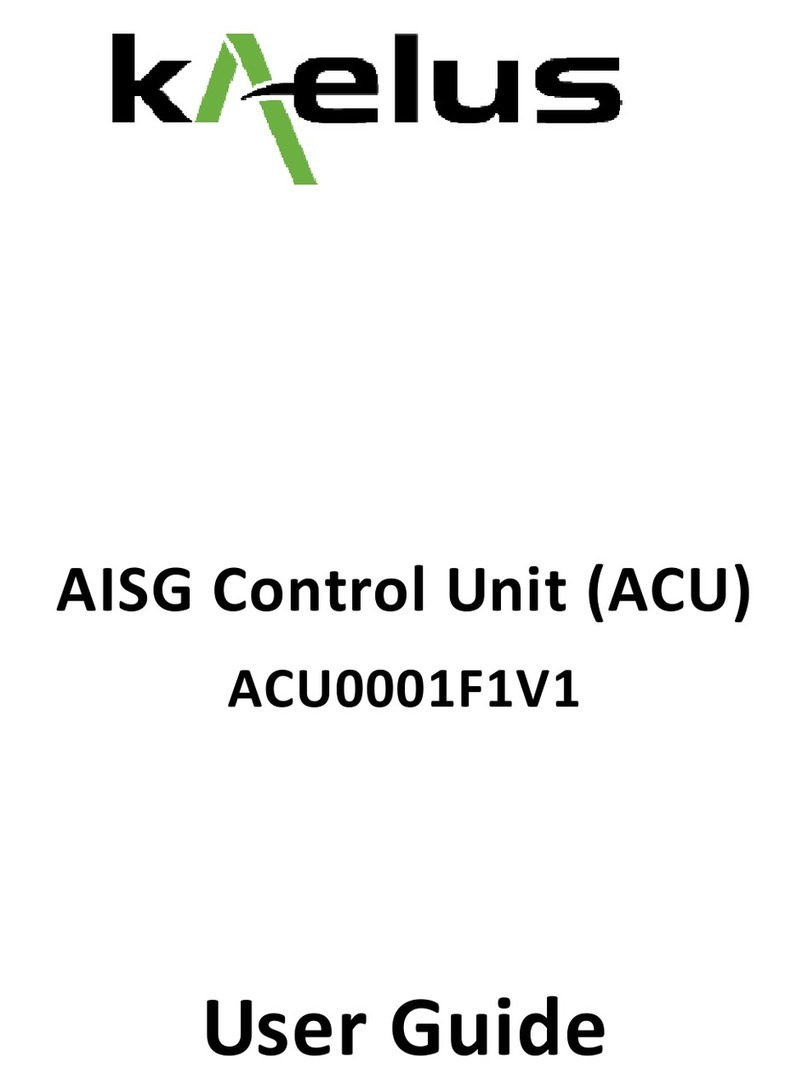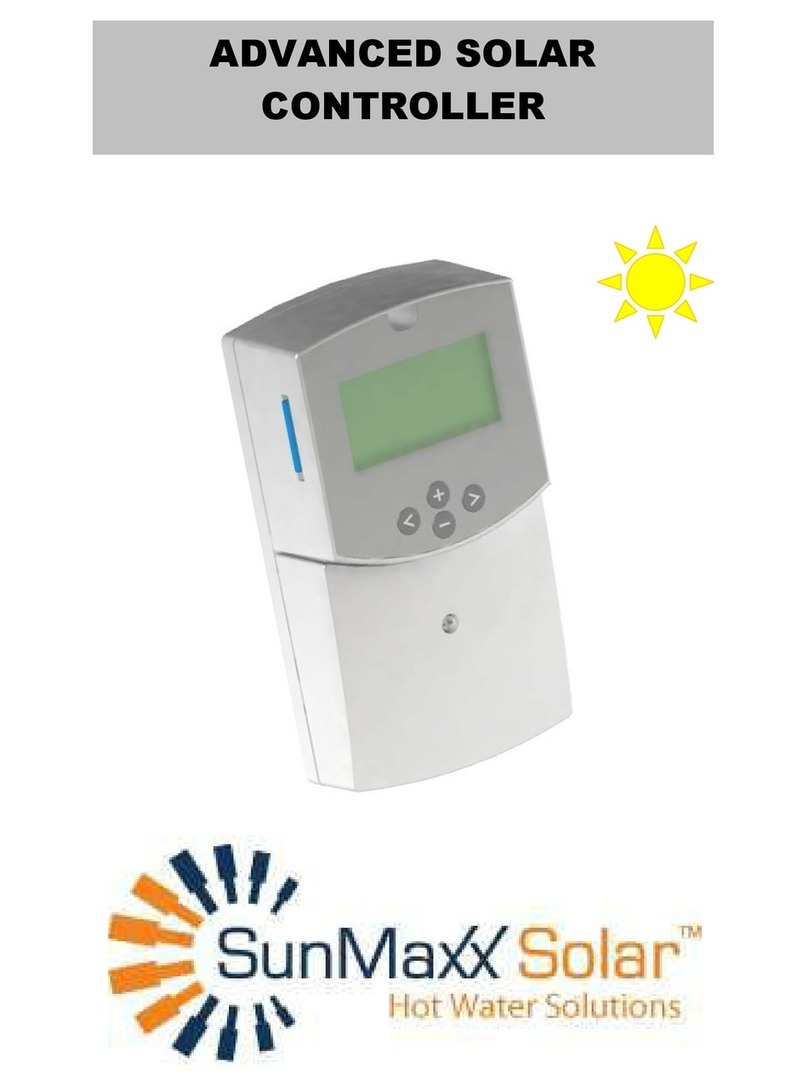ELAU PacDrive M User manual

PacDriveTM M
- Field Bus PROFIBUS-DP -
PDM_OpMaPROFIBUS_us0206
Article number: 17130067-001
Operating Manual

PDM_OpMaProfi_00_us.FM
page 2 field bus PROFIBUS-DP PacDrive™M
Korrekturausdruck
Imprint
© All rights reserved to ELAU AG, also in case of patent right
applications.
No part of this documentation and the related software and firm-
ware may be reproduced, rewritten, stored on a retrieval system,
transmitted or translated into any other language or computer lan-
guage without the express written consent of ELAU AG.
Any possible measure was taken to ensure the that this product
documentation is complete and correct. However, since hardware
and software are continuously improved, ELAU makes no repre-
sentations or warranties with respect to the contents of this product
documentation.
Trademarks
PacDrive is a registered trademark of ELAU AG.
All other trademarks mentioned are the exclusive property of their
manufacturers.
ELAU AG ELAU Inc.
Dillberg 12 4201 W. Wrightwood Ave.
D-97828 Marktheidenfeld Chicago, IL 60639
Phone: +49 (0) 93 91 / 606-0 Phone: 773 342 8400
Fax: +49 (0) 93 91 / 606-300 Fax: 773 342 8404
Internet: www.elau.de www.elau.com

PDM_OpMaProfibus_usIVZ.fm
PacDrive™ M field bus PROFIBUS-DP Seite 3
Contents
Korrekturausdruck
Contents
1 Safety 5
1.1 Depiction of Safety Notes ...................................................................... 5
1.2 Use as Directed ..................................................................................... 6
1.3 General Safety Instructions ................................................................... 6
2 Use of This Operating Manual 7
2.1 Target Group ......................................................................................... 7
2.2 Depiction Conventions ........................................................................... 7
3 Overview 9
3.1 In General .............................................................................................. 9
3.2 PROFIBUS-DP .................................................................................... 10
4 Diagnosis 13
4.1 In General ............................................................................................ 13
4.2 Example for a Diagnosis Message ...................................................... 14
5 Transportation, Storage, Unpacking 15
5.1 Transportation ...................................................................................... 15
5.2 Storage ................................................................................................ 15
5.3 Unpacking ............................................................................................ 16
6 Configuration, Parametrization 17
6.1 In General ............................................................................................ 17
6.2 Overview .............................................................................................. 17
6.2.1 System Structure ................................................................................. 17
6.2.2 Data Consistency ................................................................................. 19
6.2.3 Information on the WAGO Bus Coupler ............................................... 20
6.3 PROFIBUS-DP Master ........................................................................ 21
6.3.1 Configuration ....................................................................................... 21
6.3.2 Parametrization .................................................................................... 36
6.4 PROFIBUS-DP Slave .......................................................................... 47
6.4.1 Configuration ....................................................................................... 47
6.4.2 Parametrization .................................................................................... 51
7 Maintenance 59
7.1 Spare Parts, Components ................................................................... 59
7.2 Repair .................................................................................................. 60

PDM_OpMaProfibus_usIVZ.fm
Seite 4 field bus PROFIBUS-DP PacDrive™M
Contents
Korrekturausdruck
7.3 Service Addresses ............................................................................... 60
7.4 Exchanging Units ................................................................................. 61
7.4.1 Procedure for PROFIBUS-DP master module ..................................... 62
7.4.2 Procedure for PROFIBUS-DP slave module ........................................ 64
8 Technical Data 67
8.1 In General ............................................................................................. 67
8.1.1 RS-485 Transmission for PROFIBUS-DP ............................................ 67
8.1.2 PROFIBUS-DP Master ......................................................................... 69
8.1.3 PROFIBUS-DP Slave ........................................................................... 70
8.2 Electrical Connections .......................................................................... 71
9 APPENDIX 73
9.1 Contact ................................................................................................. 73
9.2 Contract on the Use of Software Products ........................................... 74
9.3 Further Literature .................................................................................. 80
9.4 Product Training ................................................................................... 82
9.5 Modifications ........................................................................................ 83
9.6 Index ..................................................................................................... 85
9.7 Form for Error Report ........................................................................... 87

PDM_SicherhStd_us.FM
PacDrive™ M page 5
1.1 Depiction of Safety Notes
Korrekturausdruck
1 Safety
This chapter describes the general requirements for working safely.
If the work involves any remaining risk, we will
point this out in the respective passages,
warn you of any possible danger and
describe how the danger can be avoided.
1.1 Depiction of Safety Notes
Risk categories
We differentiate between different categories of safety notes. The
table below shows which danger and possible consequences the
symbols (pictographs) and keywords point out.
Notes
Information and notes are marked by a symbol (pictograph) and a
signal word as well.
Pictograph Keyword Definition
DANGER!
Indicates an immediately dangerous
situation that will result in death or very
serious injuries if the safety rules are
not observed.
WARNING!
Indicates a possibly dangerous situa-
tion that can result in serious injuries or
large material damage if the safety
rules are not observed.
CAUTION!
Indicates a possibly dangerous situa-
tion that might result in material
damage if the safety rules are not
observed.
Pictograph Keyword Definition
NOTE
Tips for usage and other important or
useful information and notes

PDM_SicherhStd_us.FM
page 6 PacDrive™ M
1 Safety
Korrekturausdruck
1.2 Use as Directed
The components of the PacDrive™ system may only be used for
the applications described in this manual and only in combination
with third-party devices and components recommended or appro-
ved by ELAU.
Any other application is not regarded as "Use as directed".
WARNING!
Risk of injury due to use other than directed!
If the components of the PacDrive™ system are used in a different
way than described above or modified without ELAU’s approval,
persons may be injured and material damage may occur.
"Use as directed" includes that you
observe the Operating Manual,
observe the instructions for inspection and maintenance.
1.3 General Safety Instructions
In addition to this manual, please observe
the prohibiting, warning and mandatory signs as well as the
warnings on the components in the switching cabinet,
the corresponding laws and regulations,
the legal requirements concerning accident prevention,
the operating instructions for the other components.
Always keep the operating manuals close to the machine.

PDM_VerwendStd_us.FM
PacDrive™ M page 7
2.1 Target Group
Korrekturausdruck
2 Use of This Operating Manual
2.1 Target Group
This operating manual is aimed exclusively at technically qualified
staff with detailed knowledge in the field of automation technology.
Only qualified staff can understand the significance of the safety
notes and act accordingly.
This operating manual is aimed primarily at design and application
engineers specializing in mechanical and electrical engineering, at
programmers, service and commissioning engineers.
NOTE
Should you not be able to solve problems with the help of this
manual, please contact
ELAU AG
- Abteilung Kundendienst -
Postfach1255
D-97821 Marktheidenfeld
Telefon: 09391/606-142
Fax: 09391/606-300
2.2 Depiction Conventions
Table 2-1: Depiction conventions
Symbol Meaning
Marks the first level of an enumeration.
– Marks the second level of an enumeration.
¾Marks instructions for an action.
normal Normal text.
italics Marks a special term (e.g. parameter).
Code Program code

PDM_VerwendStd_us.FM
page 8 PacDrive™ M
2 Use of This Operating Manual
Korrekturausdruck

PDM_OpMaProfi_03_us.FM
PacDrive™ M fieldbusPROFIBUS-DP page 9
3.1 In General
Korrekturausdruck
3 Overview
3.1 In General
PROFIBUS
PROFIBUS is a manufacturer-independent open field bus standard
for various applications in production, process and building auto-
mation. The international norm EN 50 170 guarantees that
PROFIBUS is manufacturer-independent and open. PROFIBUS
enables the flawless communication between appliances from dif-
ferent manufacturers without requiring any special interface
modifications. PROFIBUS is suitable for quick, time-critical data
transfer as well as for complex communication jobs. PROFIBUS
consists of a family of three compatible variants, with 90% of appli-
cations preferring PROFIBUS-DP.
Fig. 3-1: Automation concept for food and packaging machines

PDM_OpMaProfi_03_us.FM
page 10 field bus PROFIBUS-DP PacDrive™ M
3 Overview
Korrekturausdruck
PROFIBUS-DP
This PROFIBUS variant, which is optimized for speed and low con-
nection costs, is designed especially for the communication
between automation systems and decentralized peripherals on field
level. PROFIBUS-DP is suitable as a substitute for conventional
parallel signal transmission with 24 Volt or 0-20 mA.
Basic features
PROFIBUS determines the technical and functional features of a
serial field bus system in which automation appliances located in
different places can be networked from field level to cell level. PRO-
FIBUS differentiates between master and slave units.
Master units determine the data transfer on the bus. A master may
send messages without external request if it has a bus token. In the
PROFIBUS protocol, masters are also called active participants.
Slave units are peripherals. Typical slave units are input/output
devices, valves, drives and measuring transducers. They have no
bus token, i.e. they can only acknowledge received messages or
transmit messages to the master on request. They require only a
small part of the bus protocol, which makes the implementation
fairly simple.
The MAx-4 PacController can be a master and/or slave.
The PROFIBUS module is plugged into the MAx-4 PacController
and served from there.
3.2 PROFIBUS-DP
PROFIBUS-DP is designed for fast data exchange on field level.
The central control units, such as PLC/PC, communicate with
decentralized field units such as I/O, drives and valves via a fast
serial connection. The necessary communication functions are
determined by the PROFIBUS-DP basic functions according to EN
50 170.
For parameter setting, diagnosis and alarm handling while cyclic
data transfer is in progress, additional acyclic communication
functions are needed for intelligent field units. They are defined in
the PROFIBUS directive no. 2.042 and will be explained in chapter
3.2.
Basic Functions of PROFIBUS-DP
The central control (master) cyclically reads the input information
from the slaves and writes the output information to the slaves.
Besides the cyclical transfer of useful data, PROFIBUS-DP also
features efficient functions for diagnosis and commissioning. Data

PDM_OpMaProfi_03_us.FM
PacDrive™ M field busPROFIBUS-DP page 11
3.2 PROFIBUS-DP
Korrekturausdruck
transfer is monitored by monitoring functions on the sides of both
master and slaves.
table 3-1 summarizes the basic functions of PROFIBUS-DP.
Transmission technology:
RS-485 twisted two-wire circuit or beam waveguide
Baud rates of 9.6 kbit/s up to 12 Mbit/s
Bus access:
Master-Slave method
master and slave units, max. 126 participants per bus
Communication:
point to point (useful data) or multicast (control commands)
cyclic master-slave useful data transfer
Operating states:
Operate: cyclic transmission of input and output data
Clear: inputs are read, outputs remain in safe state
Stop: only master-master data transfer possible
Synchronization:
control commands enable synchronization of inputs and out-
puts
Sync mode: outputs are synchronized
Freeze mode: inputs are synchronized
Functionality:
cyclic transfer of useful data between DP master and DP
slave(s)
configuration check for DP-Slaves
efficient diagnosing functions,3 graduated diagnosis message
levels
synchronization of inputs and/or outputs
max. 244 bytes input and output data per DP slave
Protective functions:
all messages are transmitted with hamming distance HD=4
response monitoring at DP slaves
access protection for inputs/outputs of DP slaves
monitoring of useful data transfer with adjustable monitoring
timer in master

PDM_OpMaProfi_03_us.FM
page 12 field bus PROFIBUS-DP PacDrive™ M
3 Overview
Korrekturausdruck
Table 3-1: Basic functions of PROFIBUS-DP
Fig. 3-2: Bus cycle time of a PROFIBUS-DP mono master system
Note on figure 3-2
Marginal conditions: each slave ahs 2 bytes input and 2 bytes out-
put data; the minimum slave interval time is 200 microseconds;
TSDI = 37 bit times, TSDR = 11 bit times
Device types:
DP masters class 1 (DPM1), e.g. central automation devices
such as PLC, PC ...
DP slaves, e.g. devices with binary or analog inputs/outputs,
drives, valves
18
14
10
6
2
5 10 20 30 DP-Slaves
bus cycle time
[ms]
500kBit/s
1.5 Bit/s
12 Bit/s

PDM_OpMaProfi_04_us.FM
PacDrive™ M field busPROFIBUS-DP page 13
4.1 In General
Korrekturausdruck
4 Diagnosis
4.1 In General
The PacDrive™ system supports the user with its extensive dia-
gnosis system.
The diagnosis messages can be read out with the Windows pro-
gram EPAS-4. The PacDrive™ M system also contains a powerful
message logger, which records additional diagnosis messages.
Normally the diagnosis messages are shown via an operating unit
on the machine.
In case of an error, read this diagnosis message and contact your
machine producer.
NOTE
For further details on the diagnosis, see the Programming Manual -
Reference - for the PacDrive™ M system.

PDM_OpMaProfi_04_us.FM
page 14 field bus PROFIBUS-DP PacDrive™ M
4 Diagnosis
Korrekturausdruck
4.2 Example for a Diagnosis Message
The diagnosis message 4731 „automatic bus deactivation“ is
shown.
Meaning of the diagnosis message:
class 4 error
diagnosis code 731
The meaning of the diagnosis code is further explained in the Pro-
gramming Manual - Reference - as shown below.
731 automatic bus deactivation
The Auto Clear bit in the master is set and at least one slave is
not exchanging cyclic I/O data. The error code entered after
"Err=" is equivalent to the error code of the parameter ErrorCode.
Cause:
Handling: Slave was switched off.
Reactivate slave.
Cause:
Handling: Faulty configuration of at least one slave.
Check configuration.
Cause:
Handling: Wiring error: Cable problem in the bus.
Check cable
Cause:
Handling: Wiring error: Faulty bus topology.
Check terminations,stubs, ...

PDM_OpMaProfi_05_us.FM
PacDrive™ M field busPROFIBUS-DP page 15
5.1 Transportation
Korrekturausdruck
5 Transportation, Storage, Unpacking
5.1 Transportation
¾Avoid shocks.
¾Immediately check units for transport damage and inform your
transport company, if necessary.
5.2 Storage
¾Store units in a clean, dry place.
Storage conditions:
air temperature between - 25 °C and + 70 °C.
temperature fluctuations max. 30 K per hour.

PDM_OpMaProfi_05_us.FM
page 16 field bus PROFIBUS-DP PacDrive™ M
5 Transportation, Storage, Unpacking
Korrekturausdruck
5.3 Unpacking
¾Check whether the delivery is complete.
¾Check all units for transport damage.
Type plate
The type plate contains all necessary information:
Fig. 5-1: Type plate of a MAx-4 PacController
Fig. 5-2: Type plate of a PROFIBUS-DP master optional module

PDM_OpMaProfi_06_us.fm
PacDrive™ M field busPROFIBUS-DP page 17
6.1 In General
Korrekturausdruck
6 Configuration, Parametrization
6.1 In General
The PacDrive M system is adapted to your task with the help of
ELAU’s programming and archiving software EPAS-4.
In EPAS-4, the system is configured and programmed according to
IEC 61131-3.
ATTENTION!
Detailed knowledge of the system and the IEC program is required
to make changes in the PacDrive M system. Therefore changes
should only be made by your machine supplier or ELAU staff.
6.2 Overview
6.2.1 System Structure
The image below shows the correlation of the individual
components (parameters, IEC program, field bus card, external
PROFIBUS-DP assembly group).

PDM_OpMaProfi_06_us.fm
page 18 field bus PROFIBUS-DP PacDrive™ M
6 Configuration, Parametrization
Korrekturausdruck
Fig. 6-1: Overview of PROFIBUS-DP communication
Access to IO data
The cyclic IEC program exchanges data with the IO range (direct
reading and writing).
The IO server matches this IO range against the field bus card.
When this matching takes place it is controlled via the parameter
IOTrigger. The matching is done with every trigger signal.
The field bus card exchanges data with the respective nodes in the
Profibus cycle. The Profibus cycle is influenced via the parameter
DataExMode. The Profibus cycle runs as fast as possible with
DataExMode = 0 or 1. With DataExMode = 2 the Profibus cycle
runs with the IOTrigger.
Ax-4
IEC program
Pr aTrigger();
call in IEC prg cycle
wTmpIn : WORD;
wIn : AT I%B0;
wOUT : AT Q%B0;
wTmpln := WIn;
wOUT := 1234;
IO range
IO Server
exchange in trigger cycle
IOTrigger
2
1
3
sercos cycle
field bus card
bus
cycle
in IO
trigger
cycle
IO data
exchange in
Pb bus cycle
internal
buffer
PB Bus
controller
input
output
control signals
IO data IO clamp
PROFIBUS-DP
bus coupler
clamps
DataEx ode
2
0
1
Buszyklus fertig

PDM_OpMaProfi_06_us.fm
PacDrive™ M field busPROFIBUS-DP page 19
6.2 Overview
Korrekturausdruck
6.2.2 Data Consistency
In case of access via the IO range, observe the following in terms of
data consistency:
Data consistency by priority control
To achieve data consistency across the entire IO range, the priority
of the IEC program task must be lower than that of the IO server(IO
map update). By default, the IO server has the priority 4.
Moreover, IOTrigger must be standing on 2 (IO matching by IEC
program) and DataExMode must be on 1 (synchronous buffered
firmware access to PB data) or 2 (synchronous direct firmware
access to PB data with cycle control).
NOTE
The data consistency can only be achieved for the IEC program
task that controls the triggering of the IO server.
Data consistency by checking the IO server state
To achieve data consistency across the entire IO range, you have
to use the function PrMaGetServerState or PrSlGetServerState.
Proceed as follows:
Trigger IO server.
Check IO server state.
If the IO server is waiting for the trigger, then data can be written
and read in the IEC program.
Moreover, IOTrigger must be standing on 2 (IO matching by IEC
program) and DataExMode must be on 1 (synchronous buffered
firmware access to PB data) or 2 (synchronous direct firmware
access to PB data with cycle control).
NOTE
The data consistency can only be achieved for the IEC program
task that controls the triggering of the IO server.

PDM_OpMaProfi_06_us.fm
page 20 field bus PROFIBUS-DP PacDrive™ M
6 Configuration, Parametrization
Korrekturausdruck
6.2.3 Information on the WAGO Bus Coupler
System structure
Fig. 6-2: Structure of a WAGO connector block
There are two cycles in which a data exchange is taking place.
The data are exchanged between the IO clamps and the bus
coupler via the internal K bus. This bus runs with a cycle time of
typically 2 ms with purely digital IO clamps. With analog clamps,
this cycle takes at least 5 to 10 ms. In addition, the cycle time rises
with the number of configured clamps on the bus coupler. The cycle
of the K bus can be synchronized with the Profibus cycle by means
of the Profibus parameter Process image update = “cycle
synchronous“.
The Profibus cycle is given by the master.With each Profibus cycle,
the data of the output clamps are received and the data of the input
clamps are sent.
Example on reaction time
In synchronous mode at least three Profibus cycles are necessary
to bring a reaction of an output value via a bridge to an input back
input
output
IO data
IO clamp
PROFIBUS-DP
bus coupler
clamps
K-Bus
Table of contents
Popular Control Unit manuals by other brands
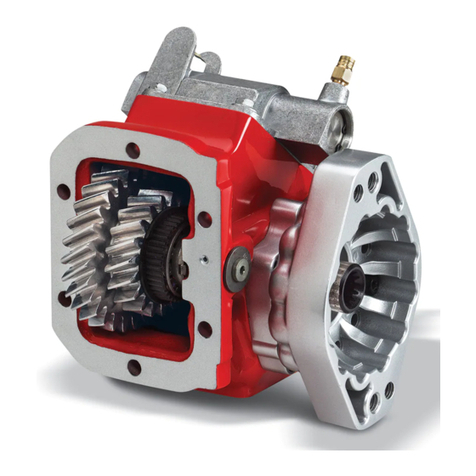
Parker
Parker 221 Series owner's manual

DMP Electronics
DMP Electronics ITI 738I Installation and programming guide

MG
MG R30NCIT1 instruction manual

Telit Wireless Solutions
Telit Wireless Solutions DE910 Series Hardware user's guide
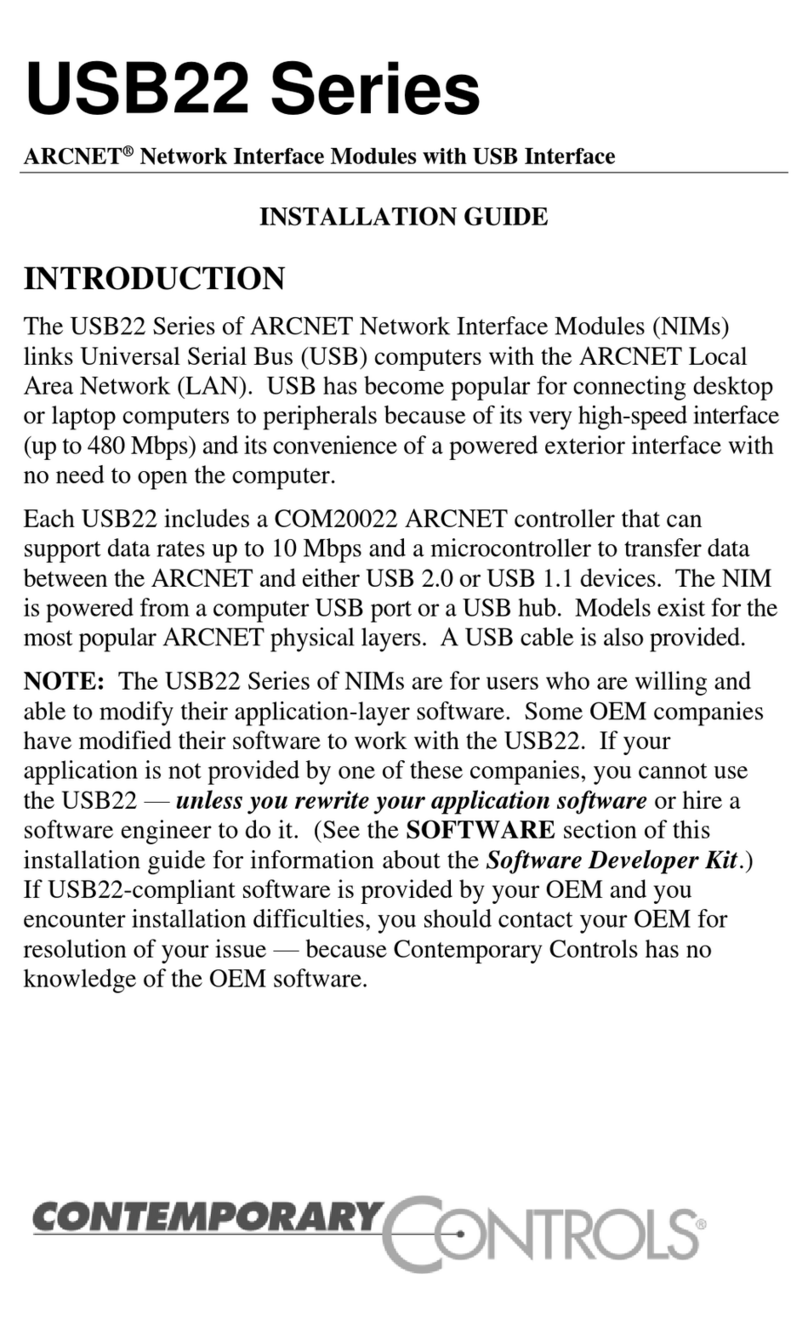
Contemporary Controls
Contemporary Controls USB22 Series installation guide

DOMIQ
DOMIQ Base Installation leaflet
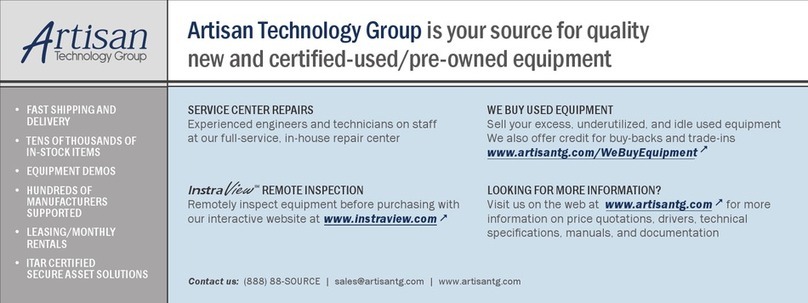
Xycom
Xycom XVME-951 manual
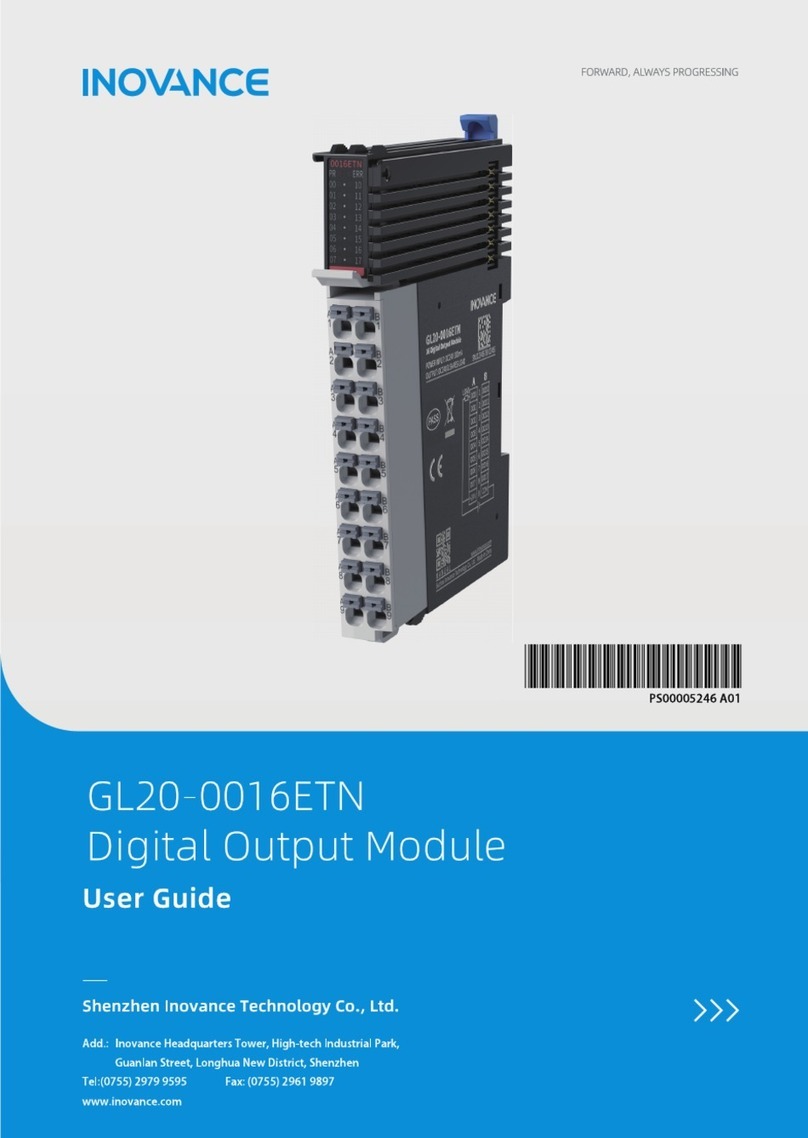
Inovance
Inovance GL20-0016ETN user guide
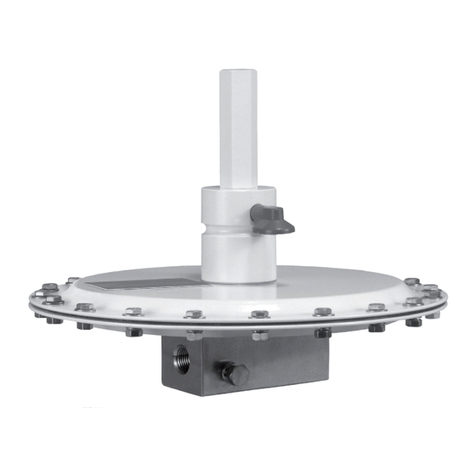
Emerson
Emerson ACE95jr instruction manual
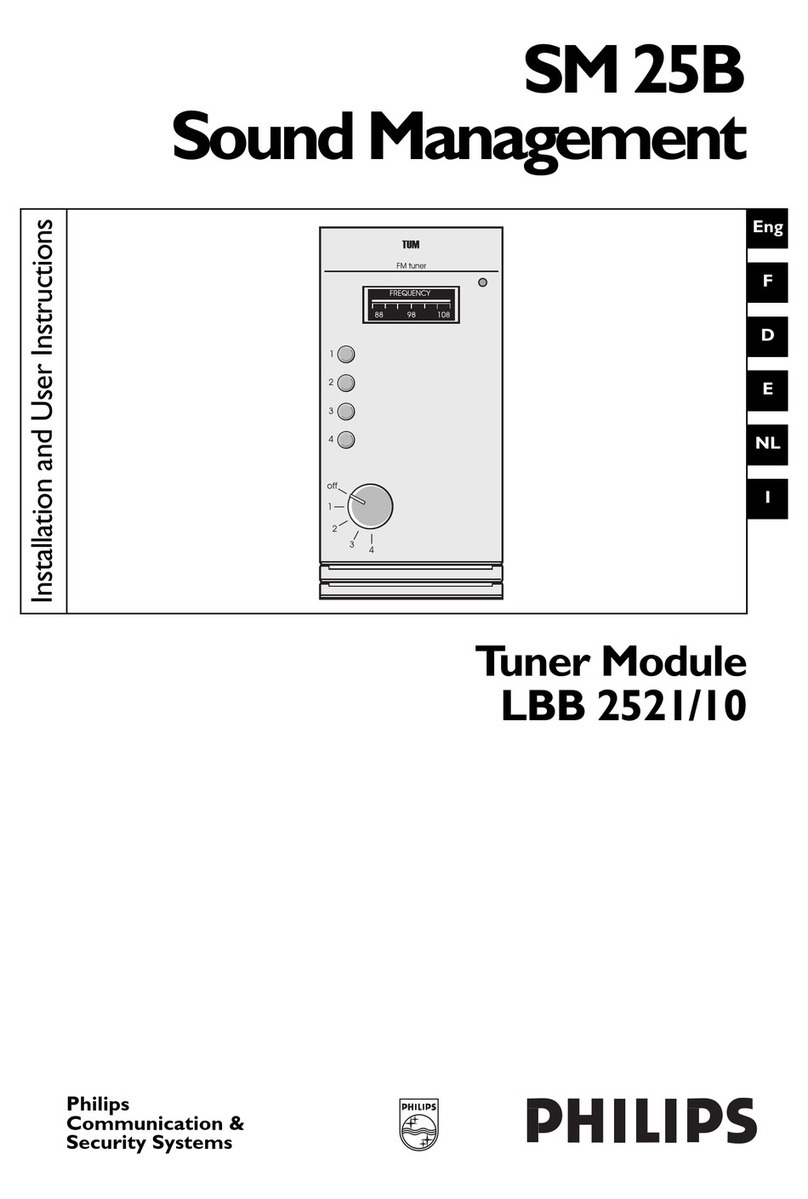
Philips
Philips LBB 2521/10 Installation and user instructions
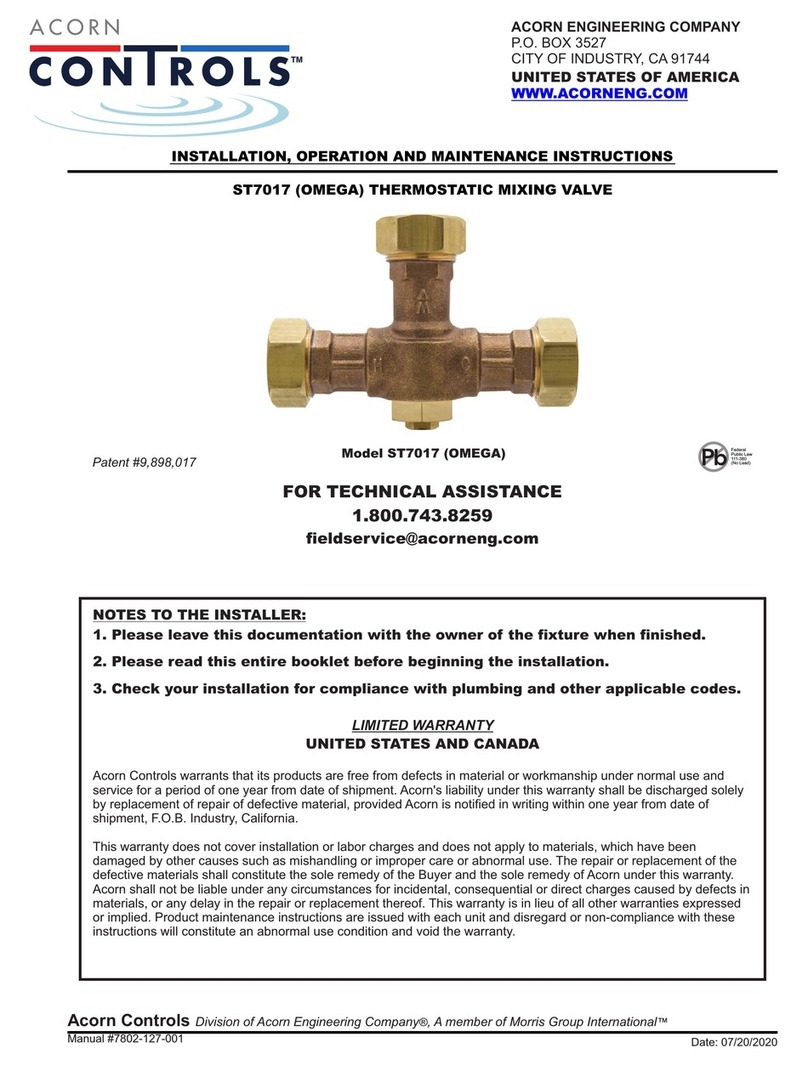
Acorn
Acorn CONTROLS ST7017 Installation, operation and maintenance instructions
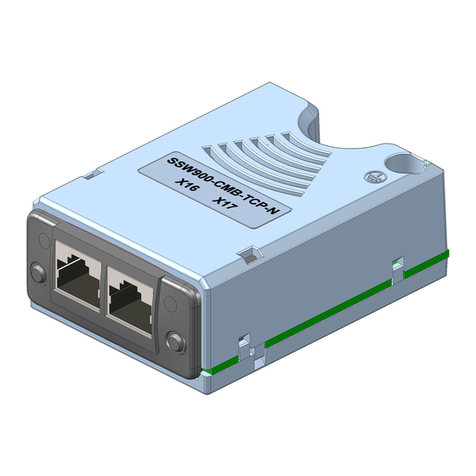
WEG
WEG SSW900-CMB-TCP-N Installation, configuration and operations guide
